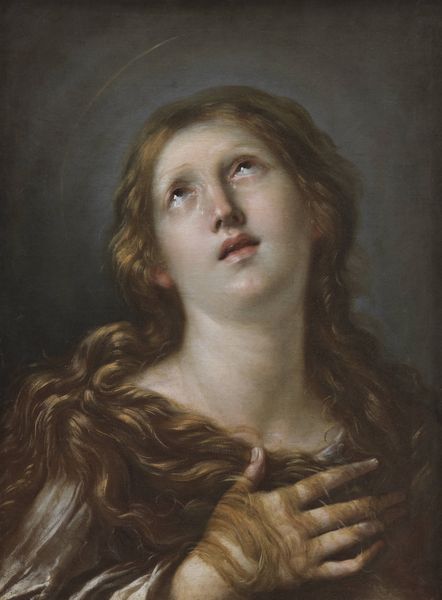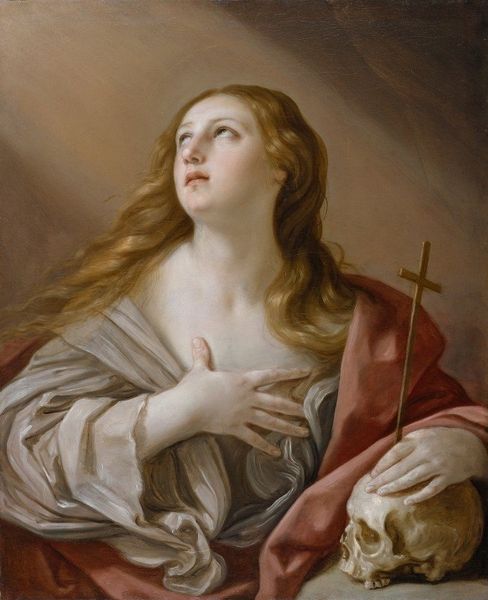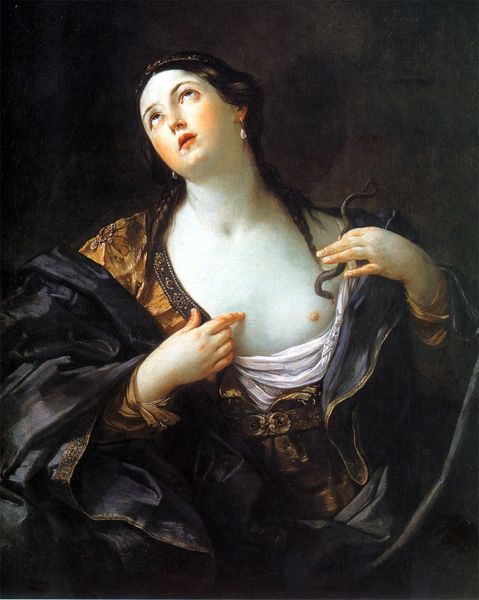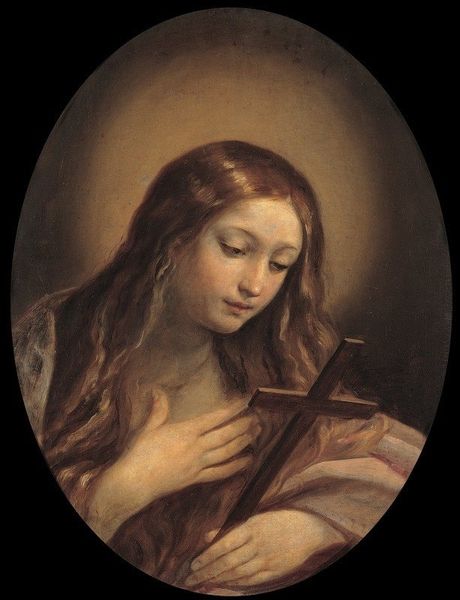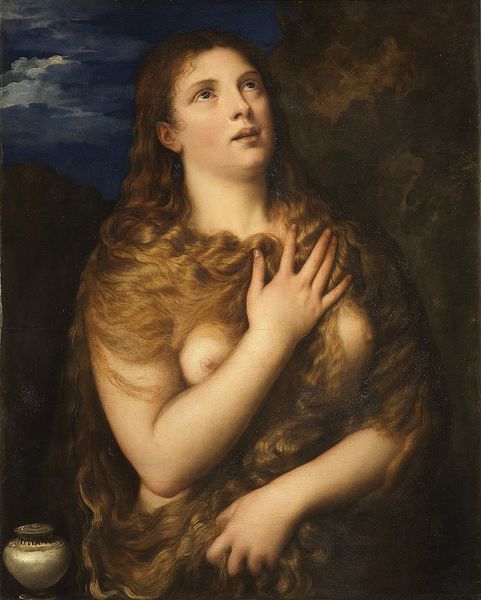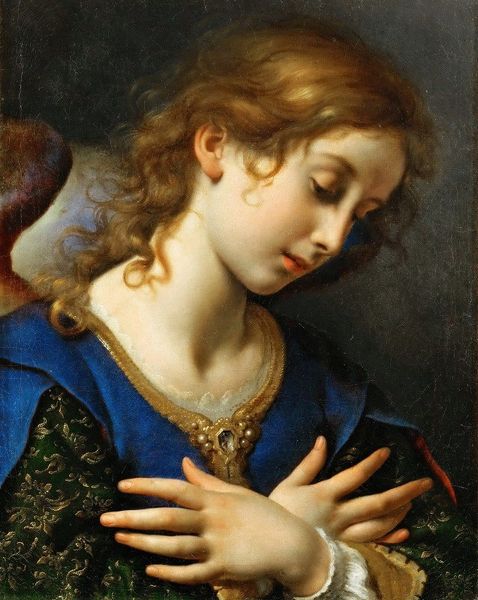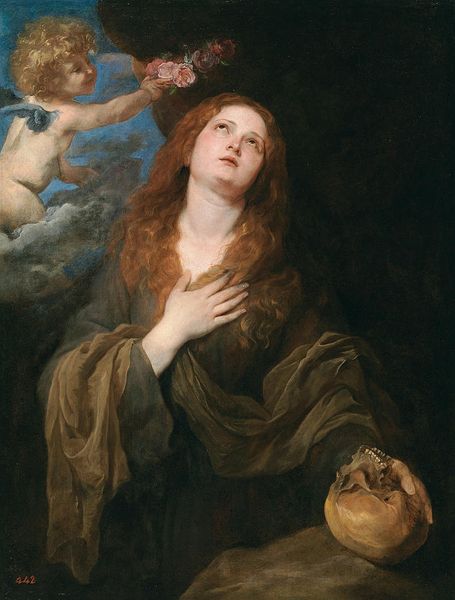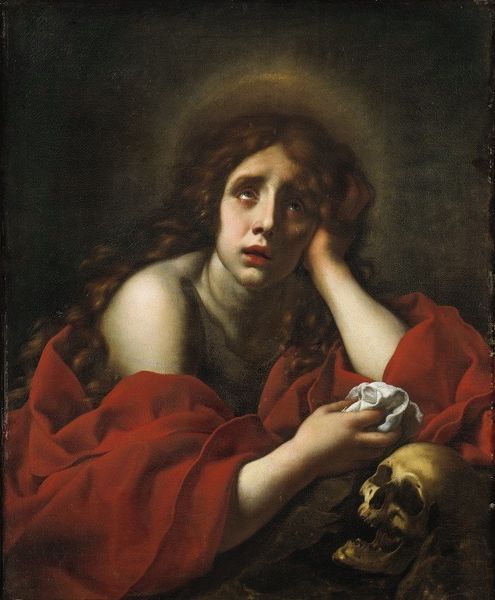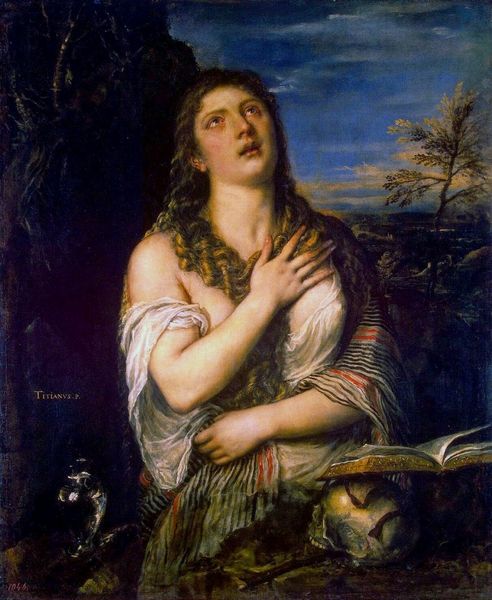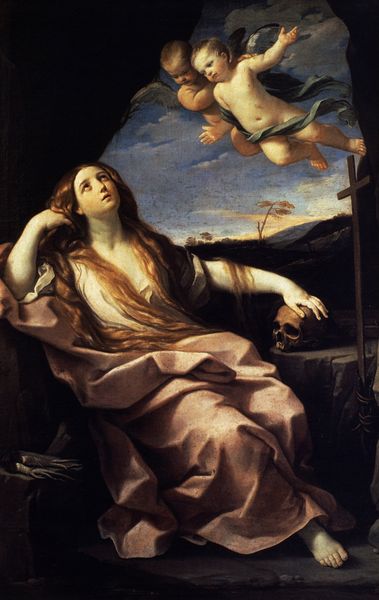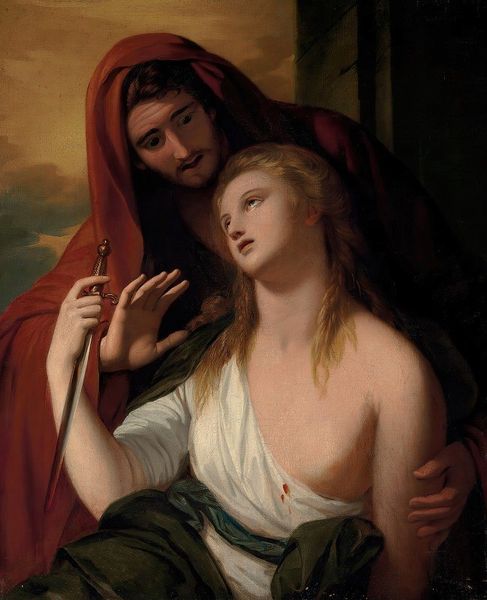
painting, oil-paint
#
portrait
#
allegory
#
baroque
#
painting
#
oil-paint
#
chiaroscuro
#
christianity
#
history-painting
#
italian-renaissance
#
nude
Dimensions: 78 x 68 cm
Copyright: Public domain
Editor: This is Guido Reni's "Magdalene in Penitence," painted around 1635 using oil on canvas. There's such drama in the light, and it’s interesting how her red garment contrasts with the darkness around her. What do you see when you look at it? Curator: Beyond the dramatic chiaroscuro, I see a carefully constructed representation of repentance deeply embedded within a system of patronage and workshop practice. Oil paint, as a material, allowed for this incredibly smooth finish, simulating flesh, and enabled Reni to achieve this commercially successful "ideal" of female beauty, then mass-produced by assistants. This work also functions within a culture of collecting where private devotion, expressed in paint, enhanced the collector's status. Editor: So, you're saying it's less about spiritual devotion and more about economics? Curator: It's both! Religious sentimentality was marketable. How were these images consumed? Who commissioned them, and how did their status impact the material value we place on them today? Think about the labor involved in grinding pigments, preparing the canvas – the often invisible hands that contributed. What materials were considered "fine art" and why? This hierarchy determined who had access to create and consume art. Editor: I see, it challenges the notion of a lone genius artist. It forces you to consider all the hands, all the labor, and even the financial motivations behind it. Curator: Exactly. Consider also how access to certain materials and training was dictated by social standing. The Magdalene wasn't just painted; she was manufactured. Thinking about this reframes our understanding of what we call 'Baroque' and its production system. Editor: That gives me a lot to consider - from the materials themselves to the societal structure enabling their transformation into art.
Comments
No comments
Be the first to comment and join the conversation on the ultimate creative platform.
